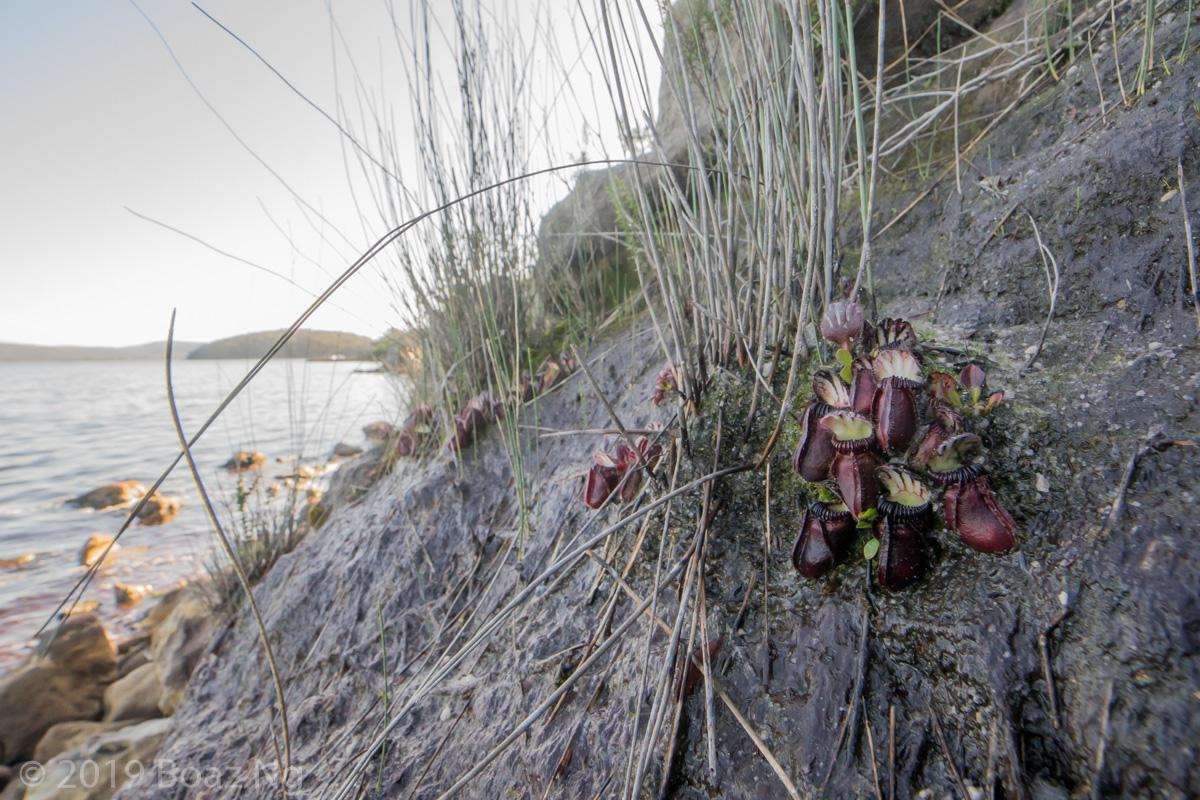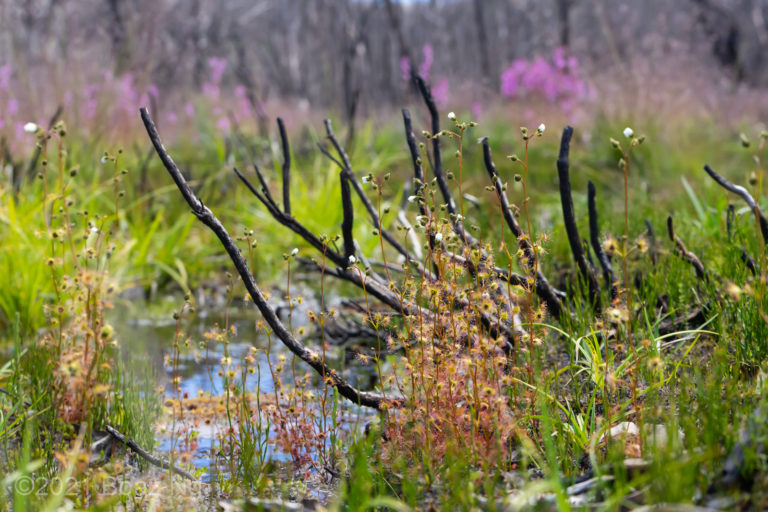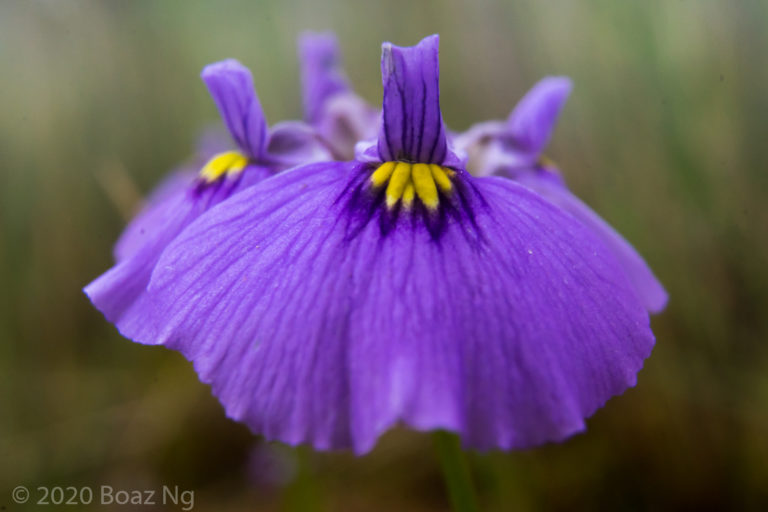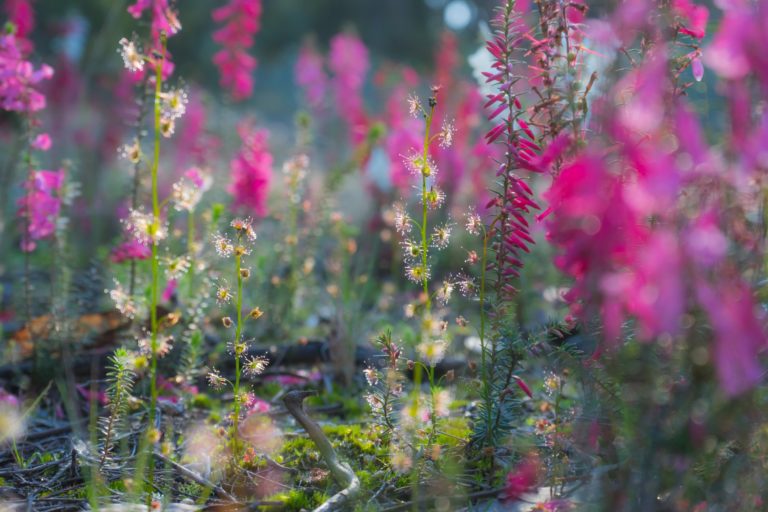Cephalotus follicularis, the Albany Pitcher Plant, is a unique species of pitcher plant endemic to Western Australia. It is a remarkable example of convergent evolution, having evolved a pit-fall trap independently of the other pitcher plants. In my 2019 expedition to Western Australia, I observed the species at several locations.
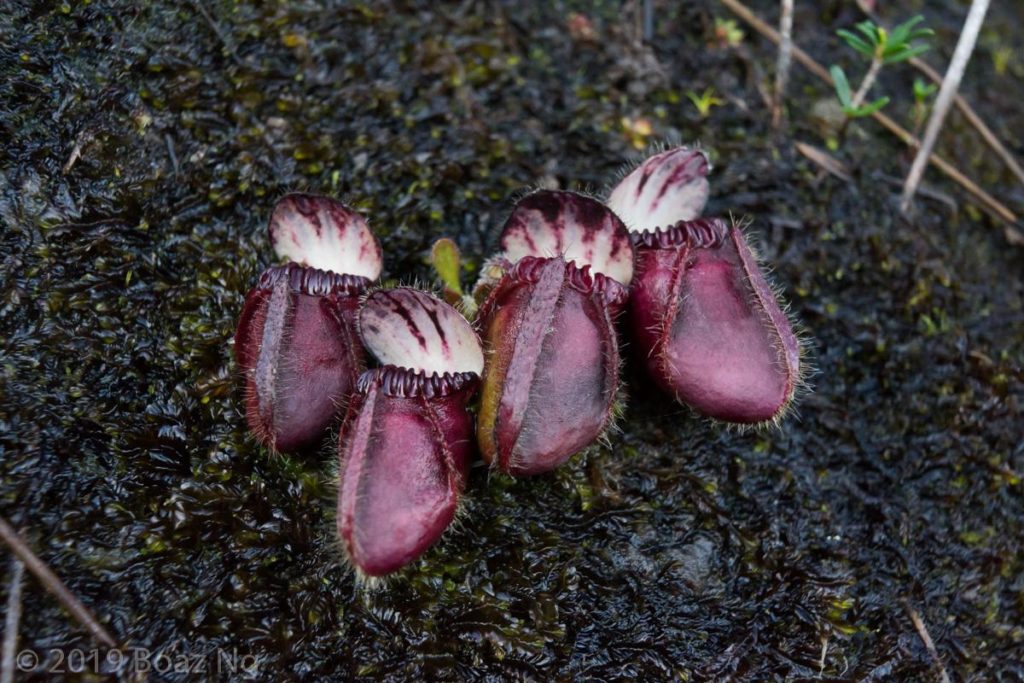
Cephalotus is a monotypic genus located in the rosid clade. The plants grow a rosette consisting of two types of leaves: an unremarkable blade in a standard leaf shape and a highly complex pitcher. The pitchers consist of a folded leaf that form a reservoir of digestive fluid. The rim of this reservoir has a peristome of inwards pointing teeth that direct prey to the trap and keeps them from escaping. A rigid lid shelters the entrance of the reservoir to prevent excess rain water from entering. The coloration of the plant ranges from light green to maroon, with some specimens attaining a blackish purple.
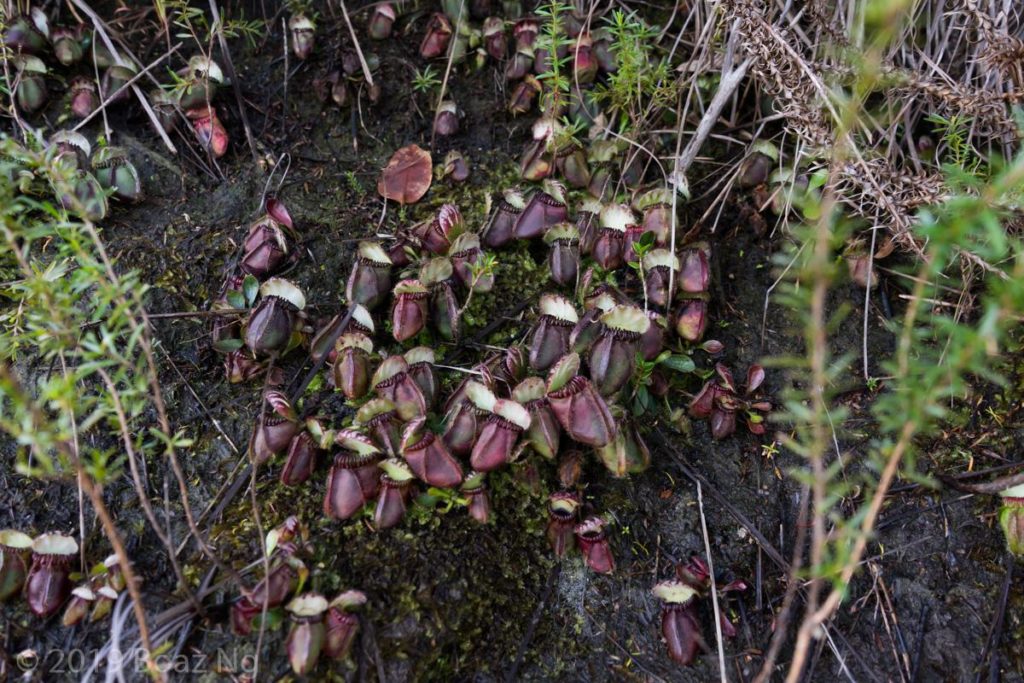
As its common name suggests, the Albany pitcher plant is endemic to the south coast of WA. It inhabits coastal swampland growing in wet peat. I first saw the species at an iconic site where a swamp drains over a peaty cliff into the estuary below. This creates a sun-exposed wet vertically surface in which thousands of Cephalotus lodge themselves in the peat wall. Whilst salt would naturally blow up onto the soils, a constant drip of water prevents it from accumulating. It appears that storms and natural erosion regularly displace plants from the loose cliff, but it the population has no trouble replenishing itself. I saw many seedlings amongst flowering sized plants. In the wild, Cephalotus is best known from this site, however it is worth noting that this cliff-face habitat is not the typical niche for this species.
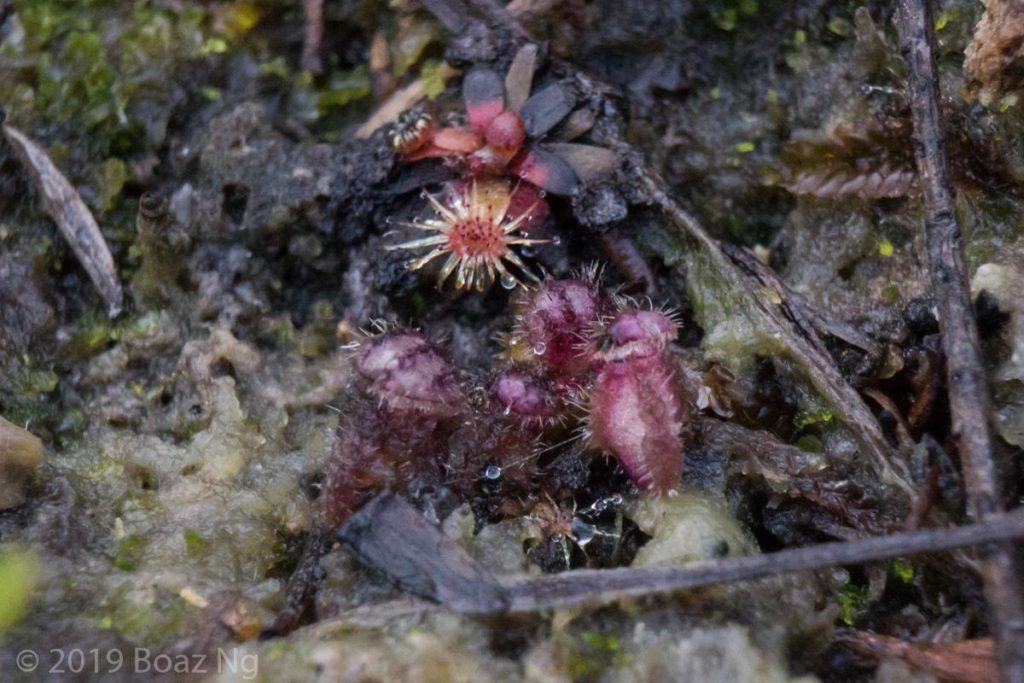
I saw the plant again in a more typical niche of coastal swamp. In these dense swamps they are not common plants and it takes quite a bit of searching to locate a few specimens. Like many Australian plants, Cephalotus likely benefits from periodic fire to clear the landscape of choking growth. However, extreme scenarios perpetrated by climate change and inappropriate ‘controlled burning’ would probably be to the species’ detriment.
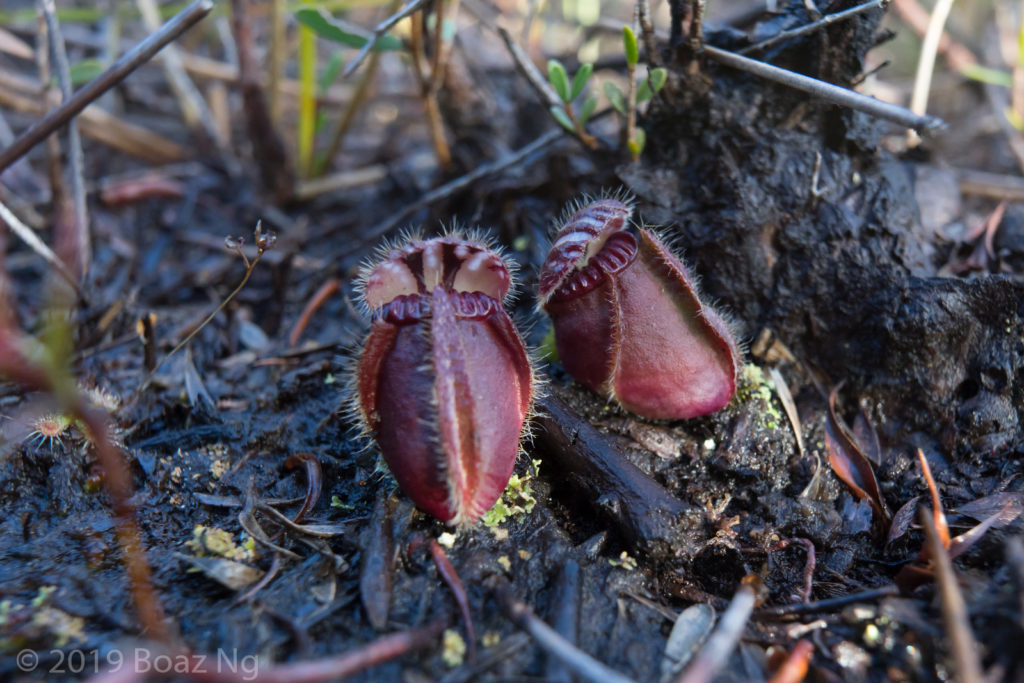
Cephalotus growing in a coastal swamp 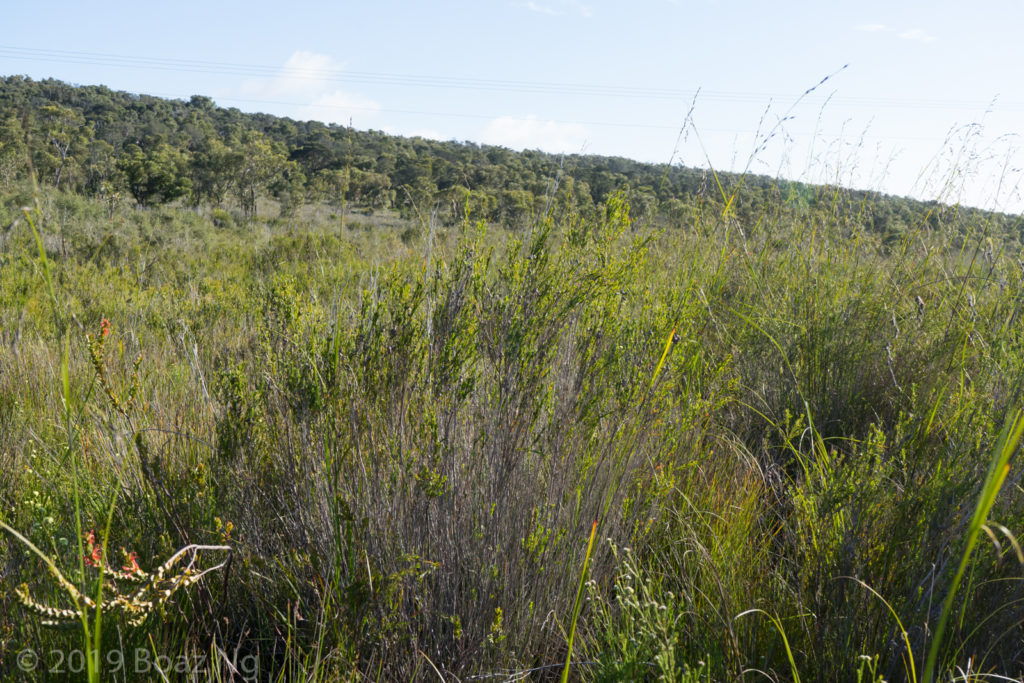
The coastal swamp habitat
The last habitat I saw the species was in a gently rolling hill on the coast east of Albany. This environment could be best classified as heath (as opposed to swamp), with low shrubs and grasses atop sand. The local topography allowed for the concentration of enough water on the slopes for the ground to be wet. Cephalotus grew on an old maintenance trail where the accumulation of water and access to sunlight favoured its presence.
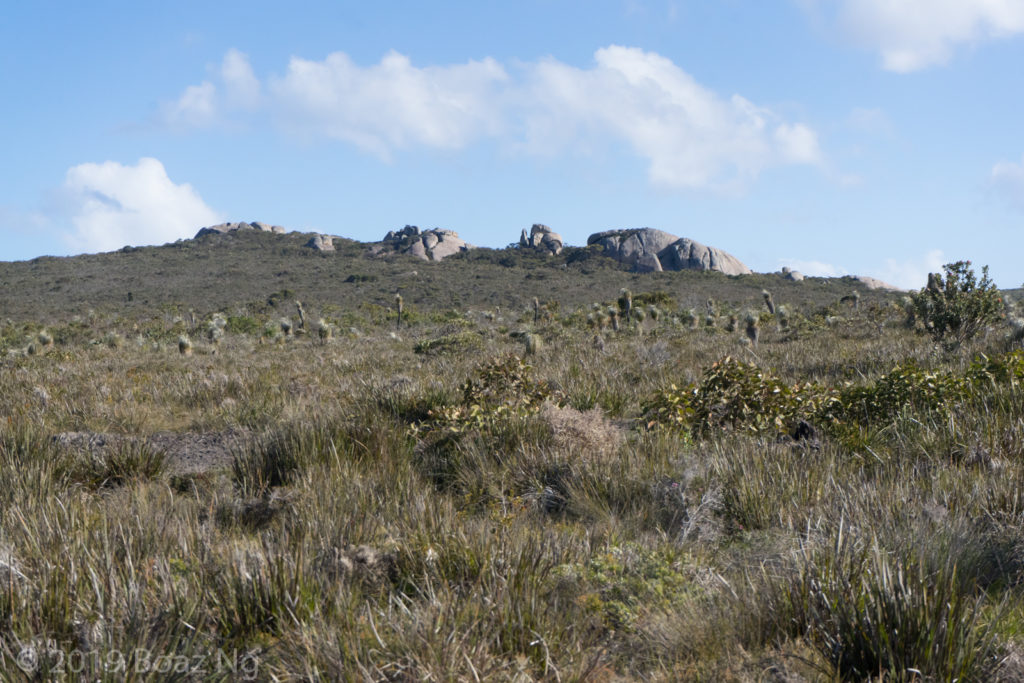
The general vicinity of the heath population of Cephalotus 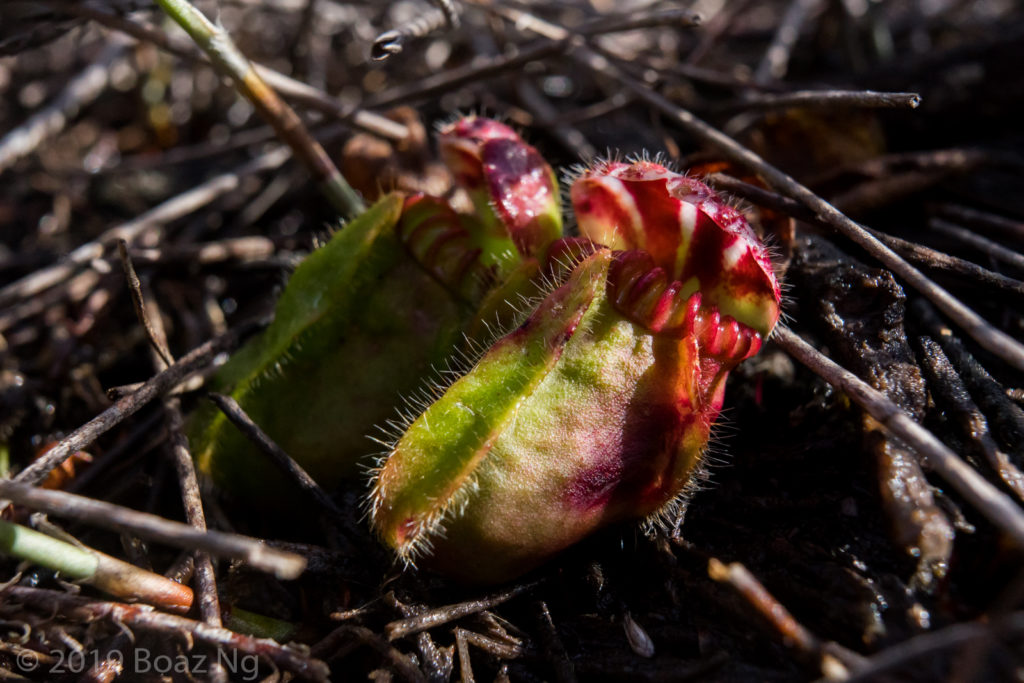
Cephalotus growing amongst heath 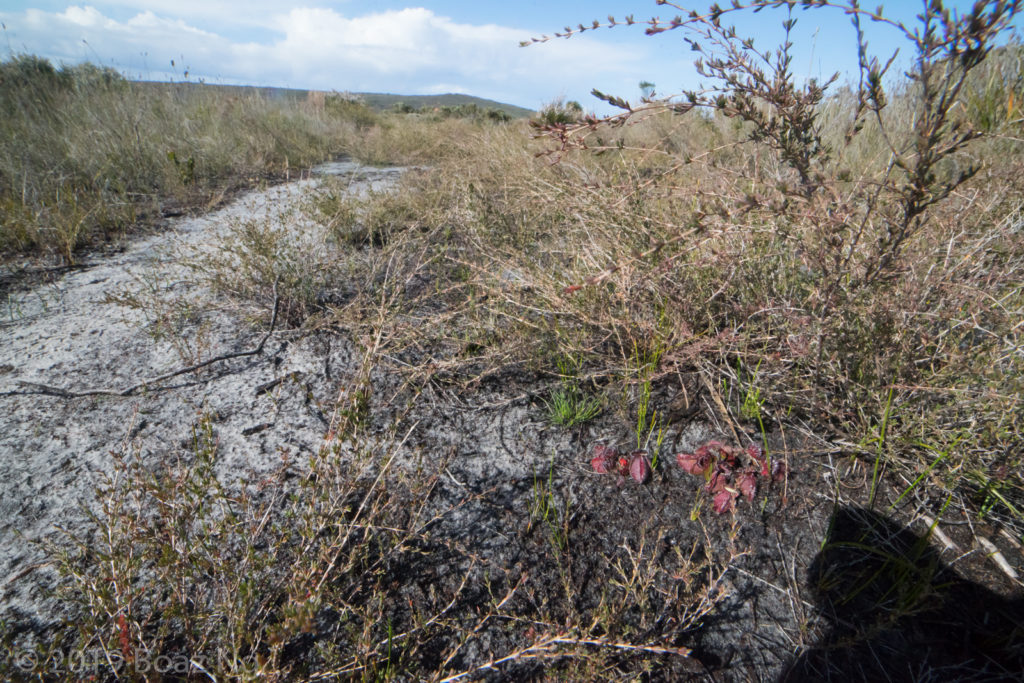
The plant grew on the side of a disturbed maintenance trail where it was wettest 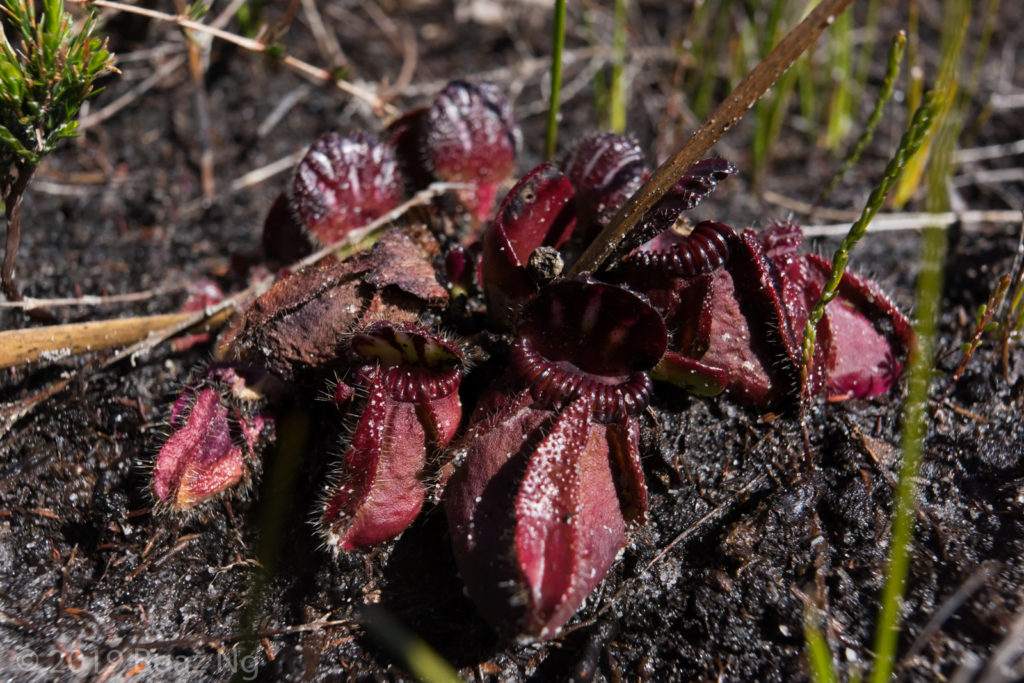
The plant grew on the side of a disturbed maintenance trail where it was wettest
All in all, the species is widespread and occupies a variety of niches. The species seems to respond well to disturbed habitats such as crumbling sea cliffs and old maintenance trails. Although it is naturally uncommon but can be locally abundant when access to light, water and space is provided.

